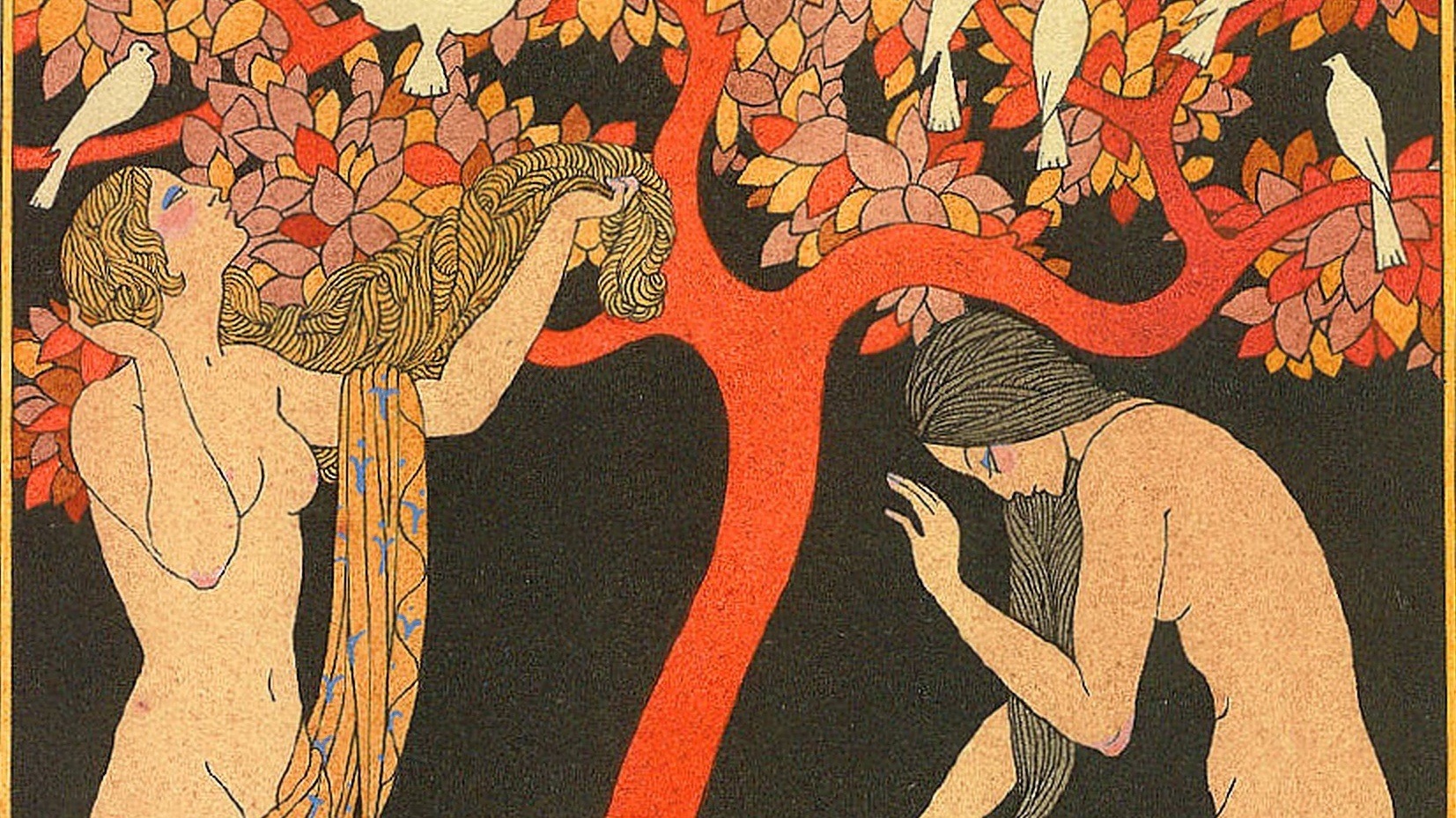In 1894, the French writer, Pierre Louÿs, published a series of erotic poems titled, Les Chansons de Bilitis. Louÿs, who sought to “express pagan sensuality with stylistic perfection,” attributed the poems to Bilitis, an Ancient Greek woman who was a contemporary of Sappho. In the introduction of the book, Louÿs claimed that he had translated the collection following its discovery on the walls of a tomb in Cypress.
In fact, Pierre Louÿs had authored the poems himself as part of an elaborate fabrication. The work’s literary value remained. In 1897, Claude Debussy set three of the poems as songs for female voice and piano. Later, in 1901, Debussy composed incidental music for a mimed recitation of the twelve poems.
The Trois Chansons de Bilitis present dreamy, illusory visions of antiquity. They inhabit an impressionistic harmonic world which includes the Lydian mode and whole-tone scale. The first song, La Flûte de Pan (“Pan’s flute”) evokes a pastoral scene in which a young man gives Bilitis an intimate lesson in playing the syrinx, or pan flute. (The syrinx was also a prominent feature of Debussy’s Mallarmé-inspired tone poem, Prélude à l’après-midi d’un faune, written a few years earlier in 1894). The piano’s accompanying lines evoke the gentle strumming of a lyre. The second song, La Chevelure (“The Tresses of hair”) grows out of a mysterious, searching line in the piano. Serene and sensuous, it drifts into whole-tone harmony. The final song, Le Tombeau des naïades (“The Tomb of the naiads”) paints a harsh winter landscape of desolate, frost-coated woods. The frigid scene is in stark contrast with the opening song’s summer warmth. The text laments the death of satyrs and nymphs, mythological creatures of the forest, and reflects, nostalgically, on the irrevocable loss of younth and innocence.
This 2013 recording features the mezzo-soprano Anne Sofie von Otter with pianist, Bengt Forsberg. Here is the text and translation for the song cycle.
I. La flûte de Pan:
II. La chevelure:
III. Le tombeau des Naïades:
Recordings
- Debussy: Trois chansons de Bilitis, L. 90, Anne Sofie von Otter, Bengt Forsberg Amazon
Featured Image: “Les Chansons de Bilitis” (1894), Georges Barbier

